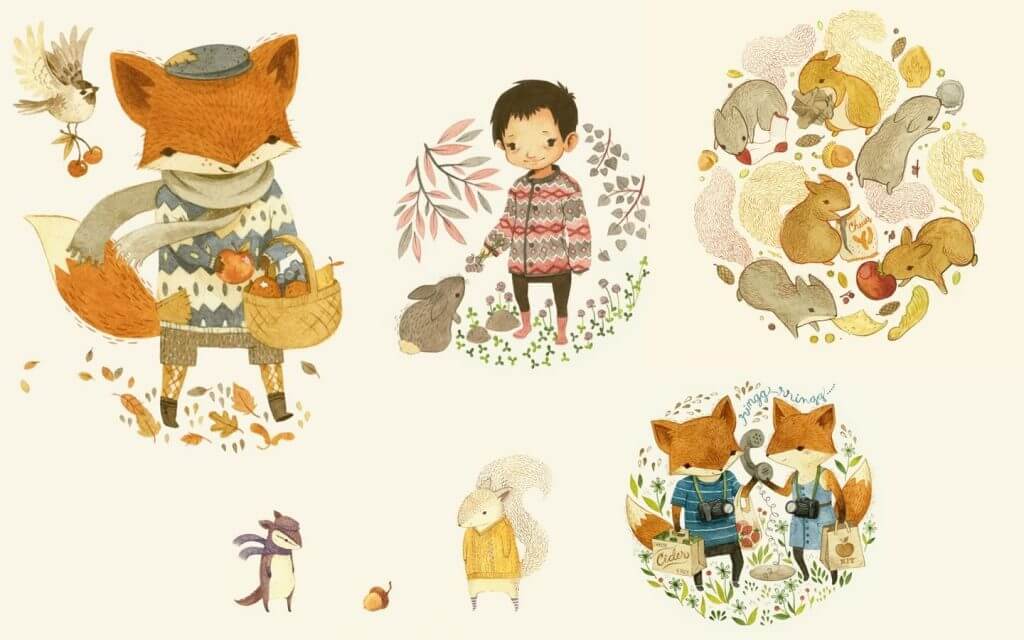
The images are part of our daily life, and this is especially true when we refer to children, who today watch television from a very young age, spend much of their time with games and electronic messages or surf the Internet. Like us, they follow the traces of a world that has found in the visual an important axis of communication. Children follow the images of everyday life from an early age – for example, identify their favorite cereal by the logo, or know the city they travel through, thanks to television, books, and assistance to museums and cultural events they approach artistic expressions where the visual is fundamental – painting, theater, cinema, dance. Thus, many children know a very complex world before the age of six.
The books that we read as children influenced us so much, thanks to the memorable pictures with our favorite characters. There are a lot of images that we can easily reproduce in memory after decades. But now, it’s more difficult to choose a good picture book. Entering the store, we just get lost and eventually take a book with the most poisonous cover, which makes the child sick. What is the secret of a successful illustration and how to choose a good picture book for a child? I am going to tell you 3 rules to create good illustrations that children will love for sure.
3 rules for creating good children’s illustrations
Well, it is highly recommended to look for expert and professional children’s book illustrator for hire in order to get amazing illustrations. There is no universal recipe for perfect illustration. But there are three rules that allow artists to create attractive drawings for children’s books.
- Children’s illustrations should be contrasting. Otherwise, it is difficult for the child to focus on something. In children, the ability to focus is not very developed. They perceive colors and shapes, so this is especially important for children’s illustrations.
- The composition should be clear, well thought out. The look should not go beyond the illustration. All attention should be concentrated within the picture.
- Readers should recognize themselves in the heroes.
You need to take liberty and get rid of all the books with plastic shaking eyes and nuclear colors. Choose the illustrations that you like. So you will step by step introduce your child to the world of beauty. Do we all limit our children in the consumption of sweets and instill a love of vegetables? You must do the same with book illustrations.
It is important to remember that it is more difficult to keep the attention of the child than the attention of an adult. To check if the illustration is sufficiently contrasted, do a simple test – take a picture in black and white shooting mode. It should turn out to be diverse in tone, not look like a coalesced gray mass.
Many adults, especially grandmothers, believe that in children’s books animals should be drawn realistically. Otherwise, the child will have a misconception about how a cat looks. As practice shows, very young children respond better to just a more symbolic image of the animal. They immediately recognize him. In addition, this symbolism develops fantasy. Do not be afraid of simplified forms. Leave realistic illustrations for older children.
If you don’t know how to choose something worthwhile from the variety of books and are lost among the assortment of bookstores, pay attention to small publishers. Small publishers are often more careful when choosing books and the quality of illustrations.
Conclusion
There is no unified classification of illustrations, everything is individual and depends on the author. For parents who still want to understand the assortment of children’s books with pictures, I’ve prepared a small guide on techniques, approaches, and styles of drawing illustrations.
It’s worth starting with the fact that there are different materials. Someone draws with paints, someone with pencils, someone combines techniques or uses collages, and someone cuts from paper. Some illustrators draw immediately from the head into the clean, and someone draws a lot of sketches and selects references.
The main thing in the illustration is the unifying principle for a series of pictures. Most often this will be the plot, it is divided into key scenes, for each of which the artist creates illustrations. The figures depict the heroes of the story.
